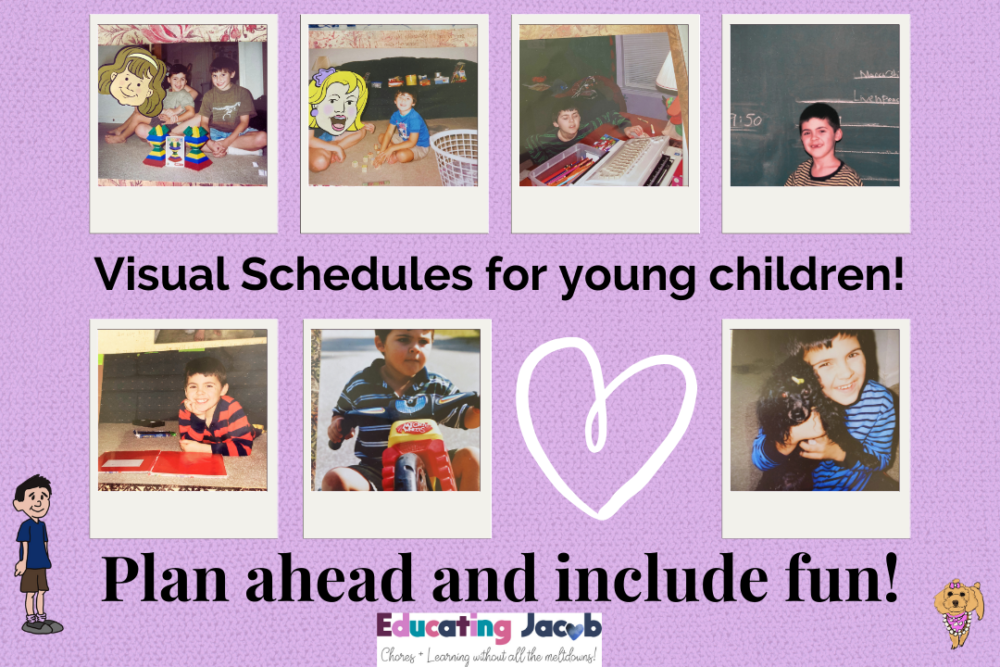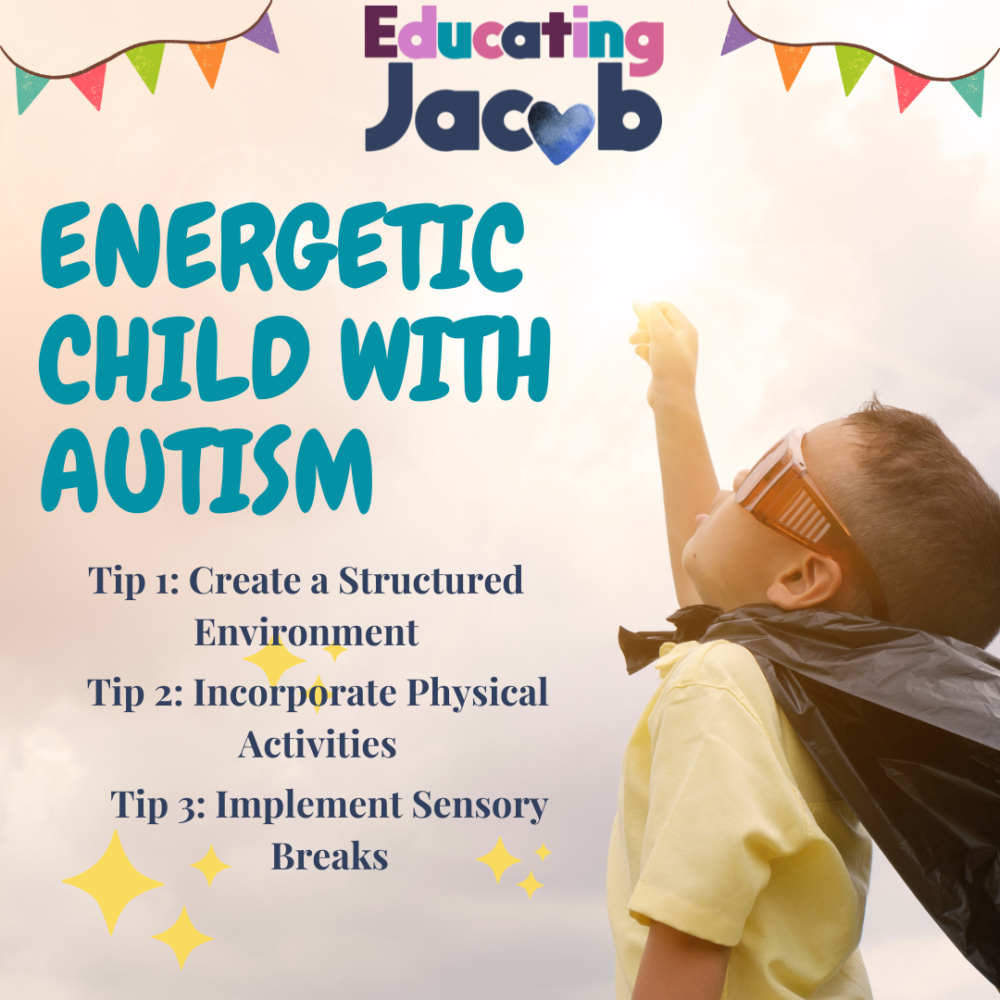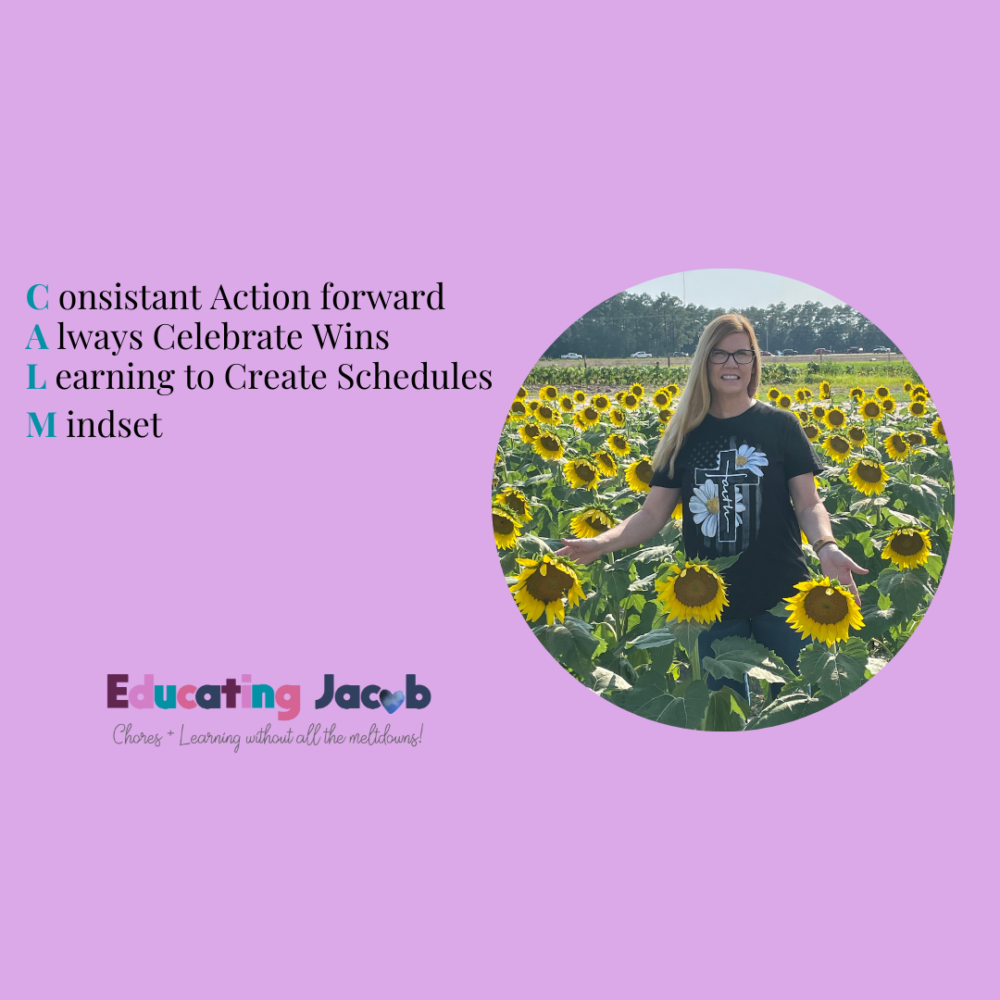Can a schedule help hyperactivity in toddlers? #Autism Challenges🧩
In the world of autism, hyperactivity in toddlers poses unique challenges that require a deeper understanding. Hyperactivity is a common behavior observed in children with autism spectrum disorder (ASD) and can significantly impact their daily lives. From incessant fidgeting to perpetual restlessness, these children are constantly on the move, making it difficult for them to focus and engage in tasks.
Can a schedule really rein in the whirlwind of hyper-activity in autism? You betcha! Meet Jacob and my students, craving the comforting embrace of predictability. With schedules, they steer their ships through anxiety’s stormy seas, mastering tasks like true captains. 🚢
Managing hyperactivity in autistic toddlers
Effectively managing hyperactivity in autistic toddlers requires a multifaceted approach that addresses the underlying factors contributing to this behavior. The following strategies can be implemented to support these children and their families:
- Structured routines and schedules: Establishing a predictable and consistent daily routine. This may include incorporating visual schedules, transition cues, and clear expectations for activities and transitions.
- Sensory integration techniques: deep pressure can help autistic toddlers with hyperactivity self-regulate and manage their sensory needs.
- Environmental modifications: Adapting the physical environment can significantly impact the behavior of autistic toddlers with hyperactivity. This may include minimizing distractions, providing a designated quiet space for calming activities, and ensuring the availability of appropriate fidget toys or sensory tools.
- Positive reinforcement and behavior management: Implement a positive reinforcement system. Consistent behavior management strategies, such as clear rules and consequences, can also be beneficial.
- Physical activity and exercise: Incorporating regular physical activity and exercise into the daily routine can help channel the toddler’s energy in a constructive manner. This may include activities like swimming, trampoline jumping, or structured play in a sensory-friendly environment.
- Caregiver support and education: Providing caregivers with education and training on managing hyperactivity in autism can empower them to implement effective strategies at home.

Knowing how to create a simple visual schedule will help reduce overwhelm and increase independence! Need to know more? check out this post: How can using schedules can change your child’s life?
Autism and Calming Exercises
Sometimes, a little physical activity can work wonders in calming down hyper-active toddlers with autism. Not only does it help expend their excess energy, but it also aids in nervous system regulation.🤸♂️
– Jumping Jacks: A classic exercise that gets the heart pumping and the body moving. Encourage your child to join in the fun and jump along with them. It’s a great way to release pent-up energy and promote a sense of calm.
– Figure 8 Movement: Have your child trace the shape of a figure 8 in the air with their hands or feet. This simple yet effective exercise helps integrate both sides of the brain, promoting better coordination and focus.🔄
Incorporating these exercises into your child’s daily routine can provide much-needed sensory input and help them regulate their nervous system. Plus, they’re a fun way to bond and engage with your little one!
The ADHD Conundrum
Toddlers, pre-adolescents, and adults with autism often grapple with neurological regulation, leading to restlessness and hyperactivity. But fear not, fellow parents! Environmental factors like sound and lighting can also stir the hyperactivity pot. 🌪️
Whether the lights need to be dimmed or noise cancelling headphones put on we can work through this and learn together. Jacob learned sight words by jumping on the rebounder while I flashed cards. He can tolerate the vacuum with head phones, just don’t give up.💡
Signs and symptoms of hyperactivity in autism
Recognizing the signs and symptoms of hyperactivity in autistic toddlers is essential for early intervention and effective management of this behavior. Some of the common signs and symptoms of hyperactivity in autism include:
- Excessive physical movement: Autistic toddlers with hyperactivity may exhibit constant fidgeting, restlessness, and an inability to sit still for extended periods. They may frequently jump, run, or climb, often without a clear purpose or goal.
- Difficulty in focusing and sustaining attention: These toddlers may have a short attention span, quickly shifting their focus from one activity to another, making it challenging for them to engage in tasks or follow instructions.
- Impulsive behaviors: Autistic toddlers with hyperactivity may act impulsively, without considering the consequences of their actions. They may interrupt conversations, grab toys from others, or engage in dangerous behaviors without hesitation.
- Emotional dysregulation: Hyperactivity in autism can be accompanied by emotional outbursts, tantrums, and difficulty in managing their feelings. Toddlers may experience sudden mood changes, become easily frustrated, or have difficulty calming themselves down.
- Sensory-seeking behaviors: Autistic toddlers with hyperactivity may engage in sensory-seeking behaviors, such as spinning, rocking, or constantly touching objects, as a way to self-regulate and cope with their heightened sensory experiences.
- Disrupted sleep patterns: Hyperactivity in autism can lead to difficulties in falling asleep, frequent nightwakings, and overall poor sleep quality, which can further exacerbate the child’s behavioral challenges.
Recognizing these signs and symptoms early on is crucial for seeking appropriate support and interventions to help autistic toddlers with hyperactivity manage their behaviors and thrive in their developmental journey.
Common challenges faced by toddlers with hyperactivity in autism
Toddlers with autism who exhibit hyperactive behaviors often face a multitude of challenges that can significantly impact their daily lives and overall development. One of the primary challenges is the difficulty in focusing and maintaining attention, which can hinder their ability to engage in learning, play, and social interactions.
Additionally, the constant state of physical and mental restlessness can make it challenging for these toddlers to participate in structured activities, follow instructions, and complete tasks. This can lead to frustration, tantrums, and behavioral outbursts, further exacerbating the challenges faced by the child and their caregivers.
Hyperactivity in autistic toddlers can also disrupt their sleep patterns, leading to fatigue, irritability, and difficulty in regulating their emotions. This, in turn, can impact their overall well-being, cognitive development, and social-emotional growth. Parents and caregivers often struggle to find effective strategies to manage these behaviors, which can be both physically and emotionally draining.
Solutions Ahoy! Taming Hyperactivity
So here I am, armed with a steaming cup of coffee and a treasure trove of tips. ☕ Let’s dive into some gems:
– Noise Dampening: Enter the headphones! A lifesaver in muting the cacophony of the outside world. Whether it’s the vacuum’s wails or a neighbor’s late-night karaoke session, these babies are Jacob’s shield against auditory chaos. 🎧
– Bouncing Fun: Ah, the rebounder—a trampoline of sensory satisfaction! It’s not just for bouncing; it’s a classroom on springs! From sight words to songs, learning takes flight on this bouncy adventure. 🤸♂️
Add exercise to help calm and soothe, check out this post: Our New Years Challenge, the schedule we will use for our new habits!
– Creative Distraction: Play-Doh, fidget toys, or anything to keep those hands busy and minds engaged. Sensory breaks don’t have to be dull; they’re a chance for creativity to shine! Slot these gems into the schedule between tasks, redirecting anxious energy into productive play. 🎨
Creating a Sensory Haven: Home Transformation
Here’s a challenge: Transform your home into a sensory-friendly wonderland! We turned chores into adventures, using pictures and Legos to build Jacob’s skills. Each mastered creation earned a spot in his independent work schedule—a win-win of sensory engagement and skill-building! 🏰
The Superhero Schedule: Jacob’s Secret Weapon
For Jacob, his schedule is his superhero cape, ready to tackle the day’s challenges. Changes aren’t shocks but opportunities to prepare and practice, saving us all from the chaos of unexpected transitions. 🦸♂️💥
If you need more help or examples go to past posts:No Schedule for Jacob to Use This Week? No Peace! Autism Challenges 🧩
Smooth Sailing Ahead: Wrapping Up
And there you have it, folks! A roadmap to taming hyperactivity’s wild ride.Here’s another article to check: https://www.webmd.com/add-adhd/childhood-adhd/adhd-or-autism With a sprinkle of creativity and a dash of routine, your toddler can navigate the high seas of sensory overload like a seasoned captain. Smooth sailing ahead! 🌊
With these strategies in your arsenal, you’ll be the captain of your child’s ship, guiding them through the choppy waters of hyperactivity with ease and humor. 🌟



